


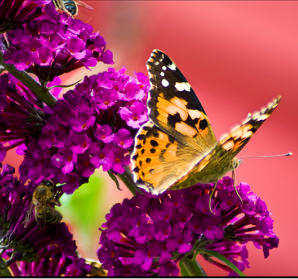








Carnations
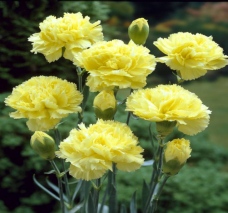
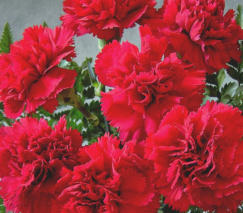
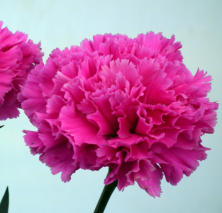
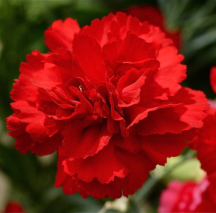
Scientific Name :
Dianthus
Common Name :
Carnation
Blooming Season :
May - July
Plant Habit :
Upright
Water :
Medium
Position :
Sun
Height :
12-24 inches




Carnations are easy to grow. Carnations grow 18" to 24" tall, and produce a spicy clove-like fragrance. There are over 300
species of Carnations, and hundreds more of hybrid varieties. Though each hybrid comes in a different color, white, pink
and red are the most common ones.
Carnations come as annual, biennial and perennial varieties. Carnations can be planted in flowerbeds, borders, rock
gardens and even containers like pots. Carnations will flower well into fall if they are guarded against harsh weather.
Carnations are one of the flowers with the longest vase-life, lasting up to 2-3 weeks. Though growing Carnations does not
require much labor, some factors are to be considered while growing them.
Growing Carnations
Soil:
Carnations thrive in fertile, well- drained, slightly alkaline (pH 6.75) soil.
Water: Carnations do not require much water, except in the hot months.You must be careful not to make the soil too wet
which can produce yellow foliage.You must spray water on the plants instead of splashing.
Temperatures and Lighting: The optimum temperature for growing Carnations range from 50 - 59°F at daytime and 41-
46°F at night. The production and development of flower buds are improved under long-day conditions. Extended daylight
at the level of 10w/m2 for at least two weeks after pinching. The extended day length will increase plant size.
Manure: Peat is an excellent organic matter that can be added when growing Carnations. Pulverized and decomposed pine
bark and well-rotted cow manure also serve as good manure. A prior soil analysis may help in deciding the kind of manure.
A soil rich in manure or well-fed with nitrogen is not suited to the carnation. It may cause heavy vegetative growth, fewer
blooms or even lead to the splitting of the calyx (green cup-like structure that holds the petals).
Mulching: Mulching should not be done when growing Carnations. Sufficient air circulation around the stems is very
necessary for their appropriate growth.They must be kept free from foliage moisture always.
Propagating Carnations
Carnations can be propagated by three ways:
By seeds:
Seeds can be sowed, 1/8 inch deep in a well-drained mix.Space seeds 12" apart. Make sure the compost is moist but not
wet. Firm soil over seed and mist spray occasionally and keep it moist. The seeds will germinate in 2 to 3 weeks.
By cuttings:
Cuttings taken from the terminal growth can also be used to propagate Carnations. The cuttings, varying from four to six
inches long are taken and the basal leaves of at least two to three nodes are removed. The cuttings are then inserted in
pure sand. The lower leaves must not touch the surface. Cuttings become ready for transplantation in 25 to 30 days.This
method is preferably used in case of perennial Carnations.
By division:
Carnations can also be grown by division through which we can rejuvenate older plants. Dig up an entire clump, and either
pull it apart using your hands to separate the plant segments, or use two gardening forks inserted in the center of the
clump, to gently pry the plant apart. Replant each new division as you would a new perennial or annual, and water it in very
well.
Caring for Carnations
Insects and Diseases: Insect and disease problems are infrequent. If insect or disease problems occur, treat early with
insecticides, repellents, or fungicide.
Supporting Tall Carnations: You need to know ahead how tall each variety will grow in order to provide the right kind of
support. The support should be set in place soon after planting, or as the plants emerge from the ground in the spring, so
the stems will remain up
Dianthus (Carnations)
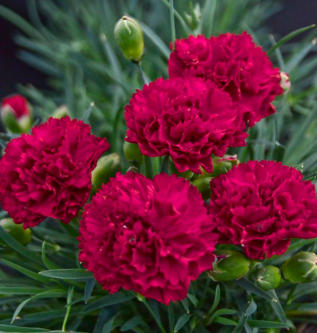
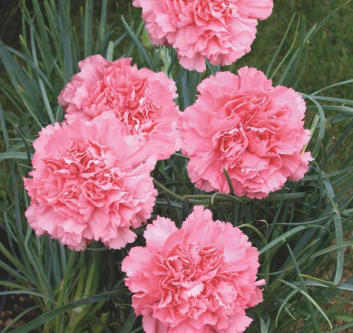

Alcea (Hollyhock)
Aquilegia
Buddliea
Buddliea Altternifolia
Delphinium
Dianthus (Carnations)
Echinacea
Eryngium
Geranium
Gerbera
Geum
Gypsophila
Herbs
Hosta
Iris
Kniphofia
Lantana
Leucanthemum
Lupins
Monarda
Penstemon
Peony
Phlox
Rudbeckia
Sidalcea
Sysirinchium
Tanacetum (Pyrethrum)
Thalictrum
Trollius
Verbena